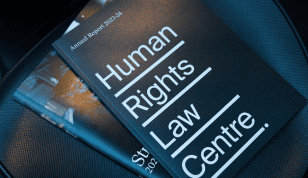Canadian law society’s decision to refuse accreditation due to discriminatory policy reasonable
Trinity Western University v The Law Society of Upper Canada [2016] ONCA 518
The Court of Appeal for Ontario has upheld a lower court’s decision to dismiss an application for judicial review of the Law Society of Upper Canada’s (LSUC) decision to refuse accreditation to an evangelical Christian law school. The Court reviewed the LSUC’s decision by reference to the standard of reasonableness and held that, in making its decision, the LSUC reasonably balanced the appellants’ rights to religious freedom against its statutory objective of protecting the ‘public interest’.
Facts
Trinity Western University (TWU) is a private university in British Columbia with a strong evangelical Christian philosophy which proscribes same-sex relationships. In 2014, TWU sought to establish an accredited law school. TWU’s proposed law school would accept applications from members of the lesbian, gay, bisexual, transgender and queer (LGBTQ) community. However, all admitted students would be required to sign and adhere to TWU’s Community Covenant, which forbids sexual intimacy, except between married heterosexual couples.
The LSUC is responsible for accrediting law schools in the province of Ontario. In January 2014, TWU requested the LSUC to accredit its law school. After receiving written submissions from TWU, academics, members of the profession and the public, the LSUC held two convocations to discuss the accreditation of TWU’s law school. At the end of the second convocation, the LSUC’s benchers voted 28 to 21 not to accredit the law school.
TWU and one of its graduates, Mr Brayden Volkenant, applied to the Divisional Court for judicial review of the LSUC’s decision. Mr Volkenant is an evangelical Christian and a graduate of TWU. He had hoped, butwas ultimately unable, to study a graduate law degree at TWU. The Divisional Court dismissed TWU’s and Mr Volkenant’s application for judicial review. TWU and Mr Volkenant appealed to the Court of Appeal for Ontario.
Decision
Standard of review
The Court’s decision was delivered by MacPherson JA, with whom Cronk and Pardu JJA agreed. The first issue to be determined was whether the LSUC’s decision should be reviewed according to the standard of correctness or reasonableness. After reviewing the relevant authorities, MacPherson JA concluded that reasonableness is the appropriate standard for reviewing decisions of professional regulatory bodies. His Honour held that, in making its decision, the LSUC was required to reasonably balance two competing considerations: first, TWU’s and Mr Volkenant’s rights to religious freedom; and second, the LSUC’s statutory objectives. His Honour conducted a detailed analysis of each of these competing considerations.
The appellants’ rights to religious freedom
Section 2(a) of the Canadian Charter of Rights and Freedoms (the Charter) provides that every person has freedom of conscience and religion. MacPherson JA held that the LSUC’s decision infringed Mr Volkenant’s and TWU’s rights to freedom of religion under the Charter because it interfered with their ability to act in accordance with their beliefs in a manner that was more than trivial or insubstantial. This finding depended on a broad interpretation of the right to freedom of religion. MacPherson JA held that TWU’s right to freedom of religion entitled it to establish a community for studying law from an evangelical Christian perspective; Mr Volkenant’s right entitled him to participate in that educational community.
The LSUC’s statutory objectives
Section 4.1 of the Law Society Act 1990 (Ontario) (the LSA) provides that the LSUC’s function is to ensure that all persons who practice law in Ontario meet appropriate standards of learning, professional competence and professional conduct. Section 4.2 provides that, in carrying out this function, the LSUC must have regard to its duty to protect the ‘public interest’. MacPherson JA held that, in pursuing this statutory objective, the LSUC was entitled to consider the importance of promoting diversity and removing discriminatory barriers to the legal profession.
This conclusion was supported by the fact that, as a regulatory body, the LSUC is itself subject to the Charter and the Human Rights Code 1990 (Ontario), meaning that its decisions must be guided by human rights values. Section 6 of the Charter provides that every individual has the right to the equal protection and equal benefit of the law without discrimination. MacPherson JA held that, contrary to section 6 of the Charter, TWU’s admissions policy was deeply discriminatory to the LGBTQ community.
Reasonableness of the balancing act
Justice MacPherson found that the LSUC had reasonably balanced the appellants’ rights to freedom of religion against its statutory objectives. In reaching this conclusion, His Honour relied on the LSUC benchers’ convocation speeches, which revealed that, on the whole, the benchers were aware of and had carefully balanced the competing considerations. Further, his Honour noted that the LSUC plays an important role as a gatekeeper to the legal profession, meaning that it was entitled to scrutinise the admissions process of a law school in deciding whether to provide accreditation.
Importantly, Macpherson JA also invoked the ‘distinction between state action that interferes with religious belief itself and state action that denies a benefit because of the impact of that religious belief on others’ [136]. His Honour considered that the LSUC’s decision was reasonable because it did not actually prevent the practice of a religious belief. The LSUC’s decision merely denied a public benefit — the accreditation of the law school — because of the impact of that religious belief on others: the LGBTQ community.
Commentary
The decision provides guidance about the scope of the right to religious freedom and how public bodies should balance that right against competing considerations. On the one hand, the Court’s decision indicates that the right to religious freedom has a broad scope. The right extends both to natural persons and religious organisations, and it encompasses an entitlement to create and participate in religious educational communities. On the other hand, however, the Court’s decision indicates that a regulatory body may reasonably curtail the expression of religious freedom by denying a public benefit to a religious entity if that entity’s activities are discriminatory or detrimental to another group within society.
The full text of the decision can be found here.
Rachel Macleod is a Law Graduate at Allens.

Common law principles of standing with ‘special interest’ upheld
In South East Forest Rescue Inc v Forestry Corporation of NSW (No 2) [2024] NSWCA 113, the NSW Court of Appeal held that South East Forest Rescue Incorporated (SEFR), an environmental organisation, had common law standing to bring civil enforcement proceedings against the Forestry Corporation of NSW (FCNSW) regarding alleged non-compliance with forestry approval conditions aimed at protecting threatened glider species.
Read more
High Court determines Commonwealth’s liability to native title compensation
In a landmark ruling, the High Court has set an important precedent that the Commonwealth is liable to pay compensation to First Nations Peoples if their native title rights have been compromised by certain historical government decisions. In this case, this included government decisions to grant mining leases.
Read more
Political Opinions in the Workplace: the Federal Court finds the ABC unlawfully terminated a journalist’s employment for holding a political opinion on the Gaza conflict
In Lattouf v Australian Broadcasting Corporation (No 2) [2025] FCA 669, the Federal Court of Australia found that the ABC unlawfully terminated Antoinette Lattouf’s employment for reasons including her political opinion in contravention of s 772(1) of the Fair Work Act 2009 (Cth) and breached the ABC Enterprise Agreement 2022 – 2025 by denying her procedural fairness. The Court awarded Ms Lattouf $70,000 in compensation, with any pecuniary penalties to be determined separately.
Read more



